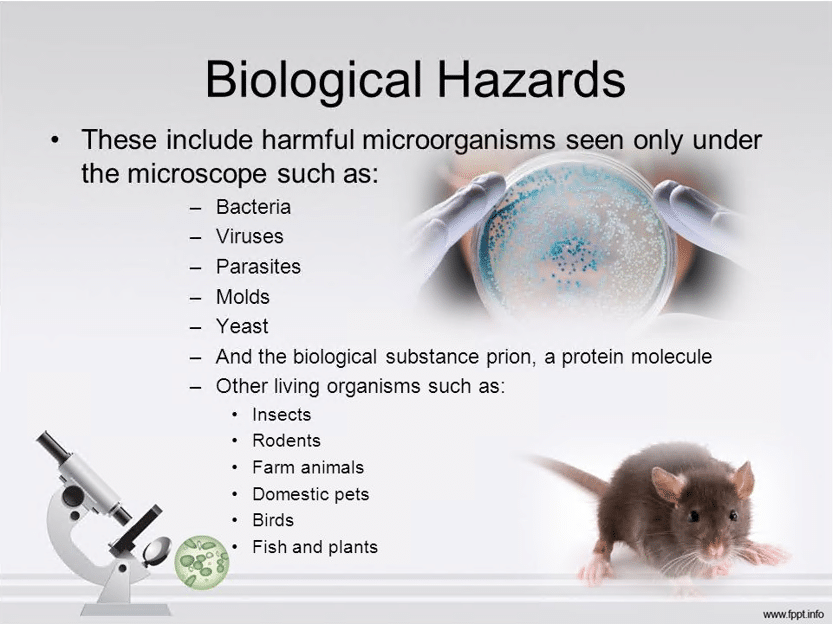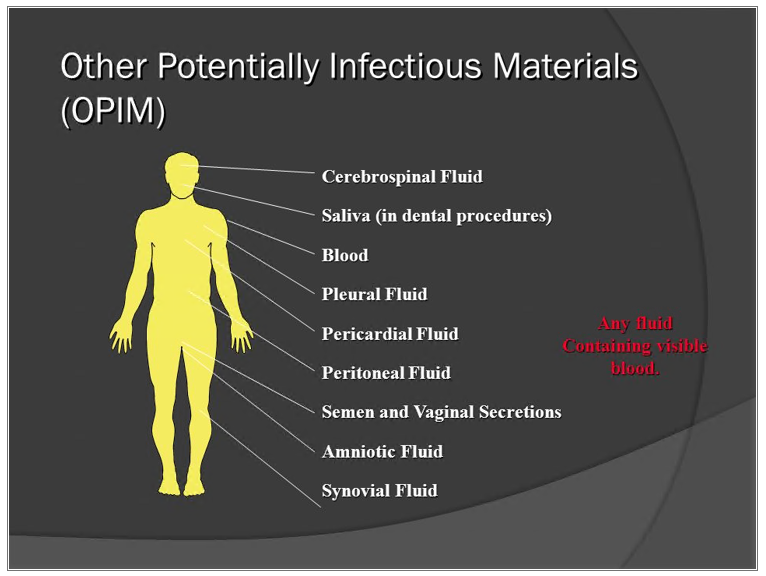Also known as biohazards, refer to biological substances that pose a threat to the health of living organisms, primarily that of humans. This can include medical waste or samples of a microorganism, virus or toxin (from a biological source) that can affect human health. It can also include substances harmful to other animals.
| What Are Biological Hazards?
• Human blood and blood products: This includes items that have been contaminated with blood and other body fluids or tissues that contain visible blood.
• Animal waste: Animal carcasses and body parts, or any bedding material used by animals that are known to be infected with pathogenic organisms.
• Human body fluids: semen, cerebrospinal fluid, pleural fluid, vaginal secretions, pericardial fluid, amniotic fluid, saliva, and peritoneal fluid.
• Microbiological wastes: Common in laboratory settings, examples of microbiological wastes include specimen cultures, disposable culture dishes, discarded viruses, and devices used to transfer or mix cultures.
• Pathological waste: Unfixed human tissue (excluding skin), waste biopsy materials, and anatomical parts from medical procedures or autopsies.
• Sharps waste: Needles, glass slides and coverslips, scalpels, and IV tubing that has the needle attached.

| What Is O.P.I.M.?
Other Potential Infectious Material
Other potentially infectious materials (OPIM) means: (1) The following human body fluids: semen, vaginal secretions, cerebrospinal fluid, synovial fluid, pleural fluid, pericardial fluid, peritoneal fluid, amniotic fluid, saliva in dental procedures, any body fluid that is visibly contaminated with blood, and all body fluids in situations where it is difficult or impossible to differentiate between body fluids; (2) Any unfixed tissue or organ (other than intact skin) from a human (living or dead); and (3) HIV-containing cell or tissue cultures, organ cultures, and HIV- or HBV-containing culture medium or other solutions; and blood, organs, or other tissues from experimental animals infected with HIV or HBV.



